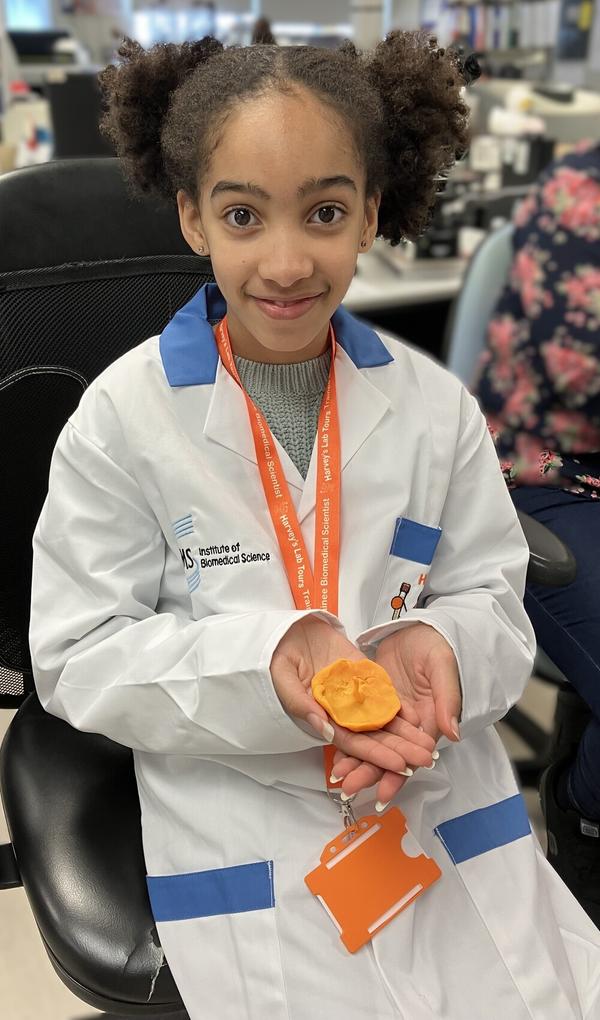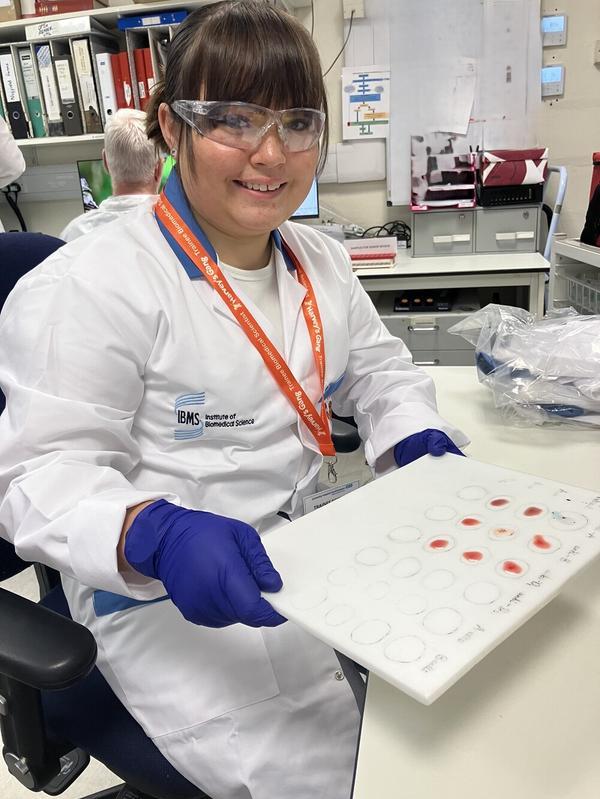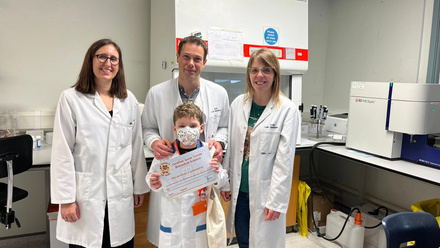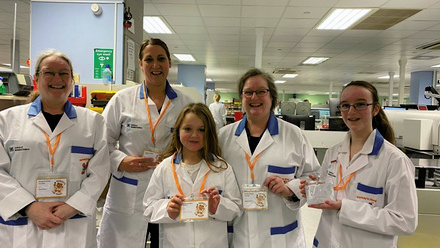Harvey’s Lab Tours at University Hospital Southampton with Chloe Aman
At University Hospital Southampton (UHS), Harvey’s Lab Tours have become an important way to connect young patients with the science behind their samples. Senior Biomedical Scientist Chloe Aman has played a leading role in introducing the programme to her site, opening up the lab to children and their families.
Over the past year, UHS has run more than 17 Harvey’s Lab Tours and welcomed 19 children into the lab. This contribution was recognised at the 2025 IBMS Awards, where the team was shortlisted for Harvey’s Lab Tour of the Year.
We had the pleasure of talking with Chloe about her process and what it takes to make these tours such a success.
Preparing for a tour
Chloe says the biggest challenge can be finding the right time for a tour:
Patients often want to visit on days when they already have a clinic appointment, so they can bring their blood sample with them. This works well, but it means there’s usually a specific date they’ll need to do the tour. As we take patients around three departments within Laboratory Medicine, it can be tricky to coordinate everyone at the right time.
At UHS, Harvey’s Lab Tours are very much a team effort, bringing together different staff ranging from Associate Practitioners to Senior Biomedical Scientists.
For the children, the goal is to make visits as fun and memorable as possible. Activities include modelling clay by the microscope to recreate abnormal red cell shapes, blood grouping experiments and the “emotions volcano.” In this experiment, vinegar, bicarbonate of soda and food colouring create an eruption that helps children talk about the different feelings they may experience during their healthcare journey.

(Photo features Betsy, who used Play-Doh to create 3D models of abnormal red blood cells during her tour)
If a patient brings their own blood samples, the team also arranges for a blood film to be prepared. By the time the group reaches the microscope, the patient can view their own cells. This is a powerful moment, as seeing something that belongs to them under the microscope makes the process less abstract, helping them understand what their tests are really showing.

(Photo features Natasha, trying out a blood grouping experiment during her tour)
We asked Chloe if she had any memorable moments to share, and she reflected on an incident that came about in the Transfusion laboratory:
“We looked at units of blood in the fridges and compared blood groups, noticing the different letters on the labels. We then did an experiment to see how different patterns help us work out what group a patient is. Ten minutes earlier he’d never heard of blood groups, but when he tried it himself he immediately worked it out. I was amazed how much he understood so quickly.”
Making an impact
Harvey’s Lab Tours can build confidence for young patients, but they can also support long-term goals. Chloe remembers a former tour participant who went on to complete the IBMS Registration Portfolio and begin training as a biomedical scientist.
Sometimes, just knowing which Pokémon is testing your full blood count (yes, the analysers are named after Pokémon!) makes blood tests a little less stressful, ” she laughs. “For inpatients especially, a tour can be morale-boosting, so being able to arrange them quickly is important.
Advice for other sites
With three children of her own, Chloe often tests activities at home before using them in tours:
That’s how I knew modelling clay for red cells would be a hit!
Her advice for staff interested in getting involved is simple:
Get involved! It’s fun and rewarding for staff as well as patients.
She also stresses the importance of planning and adaptability.
Have a dedicated inbox for tour requests and a team of volunteers to stay flexible. For example, I always let my Biochemistry and Haematology colleagues know when the patient has arrived and roughly when we will be heading to their section, so they can be ready with their activities.
Plan a rough route, but be adaptable to each child’s interests.The patient may not want to do all the activities, or they may be really interested in a particular area, so you focus on that and don’t have time to fit in everything you had planned.
Ultimately, the patient will remember the amazing day that focused on what mattered to them.
We would like to thank Chloe for sharing her experiences and for the energy she brings to making Harvey’s Lab Tours such a success at UHS.





